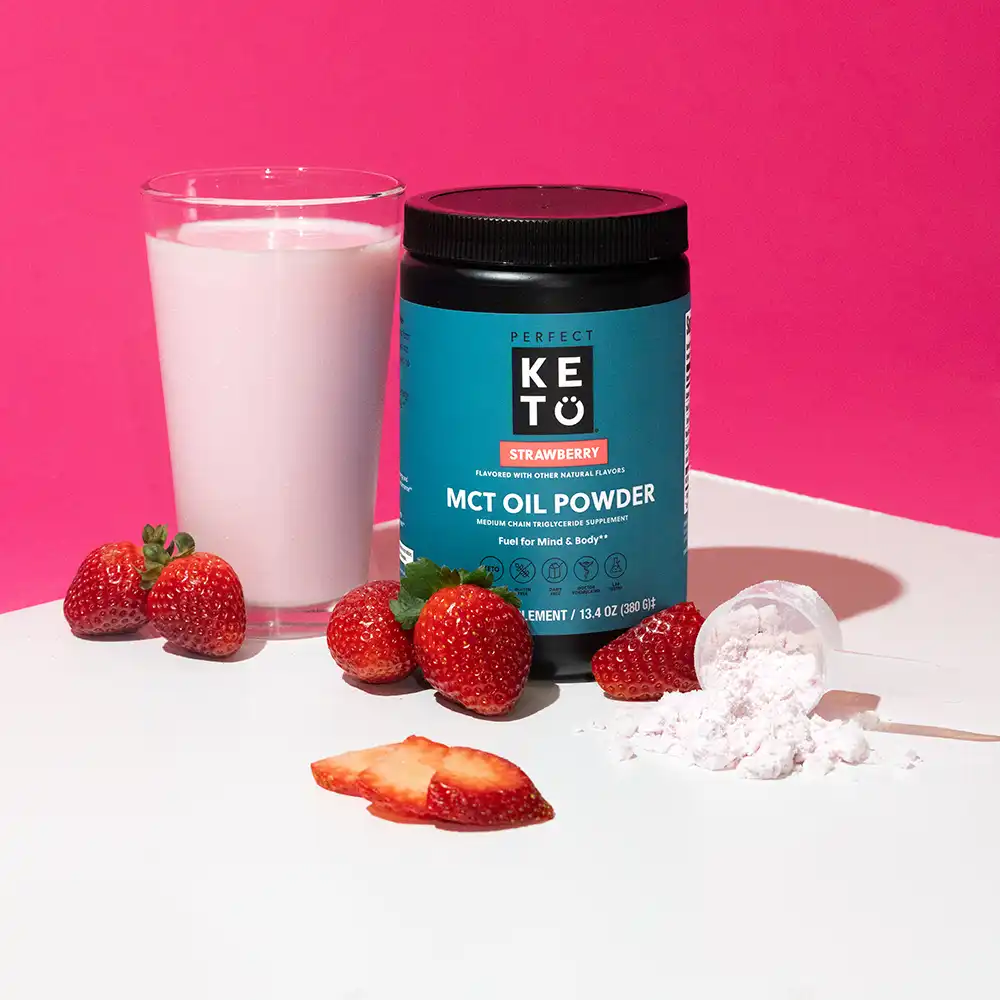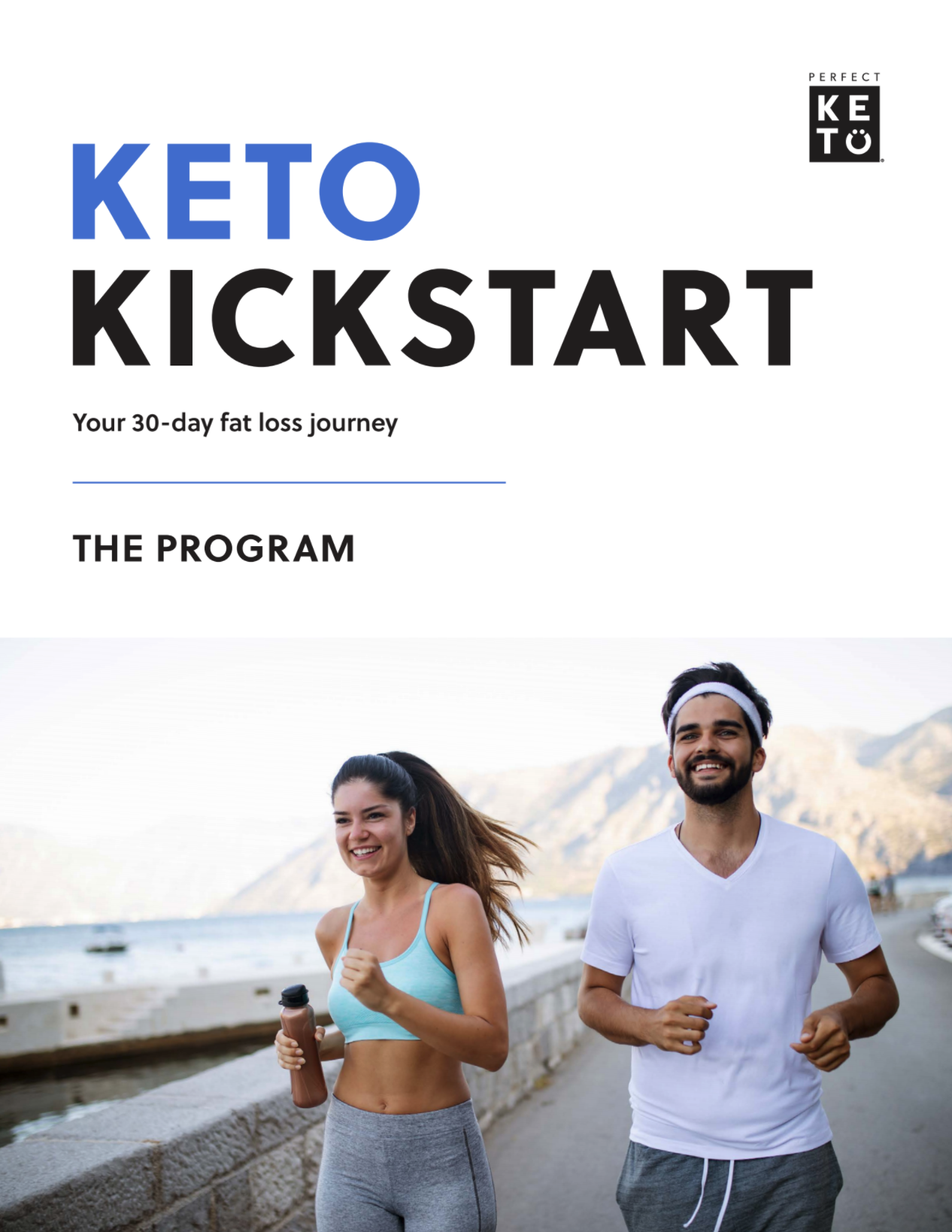With keto’s reputation as a weight loss diet, you may think it’s not a good fit for other health goals — like bodybuilding or toning up.
However, there’s a lot of interest in keto bodybuilding right now. Some bodybuilders have found that they feel great building muscle on keto and that the low-carb, high-fat diet hasn’t inhibited their muscle growth or performance at all.
Even if you don’t want to be a professional bodybuilder, there are also huge benefits to increasing your muscle mass. Muscle helps your body burn more calories, even at rest. This can make it easier to manage your weight. Increased muscle mass has also been linked to better metabolic and heart health (* , *).
Ready to muscle up? This guide to keto bodybuilding can help you get started.
Can You Build Muscles on Keto?
You can absolutely build muscle on keto.
There are just a few things your body needs to build muscle, and a high-carb diet isn’t one of them.
Still, because keto is primarily a weight loss diet, many people assume that you can’t build muscle with it.
However, ketogenic bodybuilding is a growing topic of interest. That’s why we spoke with Robert Sikes, a well-known keto bodybuilder and host of the Keto Savage podcast, to get more insights on building muscle while keto.
According to him, there are four key drivers of muscle growth:
- Protein intake
- Training
- Recovery
- Calorie intake
In the following sections, we’ll discuss how you can address each of these points to successfully build muscle on keto.
Common Keto Bodybuilding Challenges
Some of the most common keto bodybuilding challenges are not eating enough protein, not eating enough calories, and not being consistent with nutrition.
Here’s a bit more about each of these, along with some strategies to help you maximize your nutrition while building muscle on keto.
Not Eating Enough
“Many people on keto simply don’t eat enough… to elicit growth,” Sikes says.
He continues, “You need to make sure you’re eating enough total calories, or ‘fuel,’ so that your body has the energy and building blocks coming in to provide the raw materials for building more muscle tissue in the first place.”
You need to be eating at a maintenance level, or at a surplus to promote muscle growth. Use our macro calculator to calculate your needs – you can even select “gain muscle” as your weight goal and then add a custom calorie surplus. Ten percent is a good starting point.
It can be a bit of a challenge to eat enough on keto, since the low-carb, high-fat diet is so filling.
But as long as you’re hitting your protein goal, you can add additional fat to get your calories up to where they need to be.
Elevate Your Keto Diet

Perfect Keto MCT Powder – Sustained Energy, Enhanced Focus, Quick Metabolic Support. Unleash Your Potential.
Low Protein
“You need to make sure that you’re eating enough protein to build and repair muscle tissue,” explains Sikes.
All the strength training in the world won’t help you build muscle if you’re not also giving your body the raw materials (amino acids from protein) it needs to actually create these new muscle tissues.
Although the average person requires just 0.8 grams of protein per kilogram of body weight, researchers have found that doubling that to 1.6 grams of protein per kilogram of weight can help optimize muscle growth. And if you’re a competitive bodybuilder, they recommend up to 2.2 grams of protein per kilogram of body weight. Here’s what that looks like for a few different weights (*):
- 68 kilograms (150 pounds): 109-150 grams of protein
- 80 kilograms (175 pounds): 128-176 grams of protein
- 91 kilograms (200 pounds): 147-200 grams of protein
- 102 kilograms (225 pounds): 163-224 grams of protein
Alternatively, you need to aim for 25% of your calories to come from protein. You can use our macro calculator help you figure this out.
Inconsistent Meal Planning
Based on the other two common mistakes (low protein, and not eating enough total calories), you can probably tell that nutrition must be dialed in for muscle growth.
But if you’re trying to follow a complicated keto bodybuilding meal plan, where you’re eating completely differently on rest days versus training days, you may find it difficult to stick to.
That’s why Sikes follows a consistent macro plan daily. “Your body is still expending quite a few calories throughout the metabolic processes required to build and repair tissue, so you don’t want to deprive your body of that nutrition on non-training days,” he says.
Instead, he bases his macronutrient intake on his goals and eats the same macros every day — whether it’s a rest day or a training day.
How to Build Muscles on the Keto Diet
Here’s our guide to building muscles on keto. The advice in this guide can help you induce muscle hypertrophy (that’s a scientific term for muscle growth), whether you’re looking to get a little stronger or enter the competitive bodybuilding scene.
Still, especially if you’re looking to compete, you will probably want to work with trainers and nutritionists who specialize in working with bodybuilders to help optimize your workouts, nutrition, and recovery.
Eat Enough Protein and Calories
Although we already discussed the importance of protein and how to calculate your protein needs above, the importance of eating enough protein simply can’t be overstated.
Protein is a necessary part of building muscle. You won’t see the results you’re hoping for without prioritizing your daily protein target.
Here’s a list of high-protein, keto-friendly foods to help you reach your protein goal effortlessly:
- Beef
- Chicken
- Turkey
- Fish
- Shellfish
- Pork
- Game meats (venison, elk, bison, duck, etc)
- Eggs
- Cheese
- Peanuts
- Almonds
Also, don’t discount protein supplements either — check out our Keto Whey Protein or Sikes’ KetoBrick. These options can be great for on-the-go meals or for getting your post-workout protein in quickly.
You also need to eat enough calories. That means eating, at minimum, at maintenance calories — but preferably at a surplus. As long as you’re sticking to your workout routine while eating at a reasonable caloric surplus, you don’t have to worry about gaining excess harmful fat.
Here’s Sikes’s advice on this subject for competitive bodybuilders.
“Make sure you spend time in a caloric surplus with emphasis on building muscle, outside of your competition prep,” says Sikes. “Balancing out the intensity of a bodybuilding prep with a period of eating more, embracing some reasonable body fat gain, and actually capitalizing on the building phase is the yin-yang relationship that is necessary for true optimization.”
Workout Intensely
Another key part of building muscle is working out. “You need to train with enough intensity and with progressive overload principles, to subject your body to a strong enough stimulus to give it a reason to adapt,” Sikes explains, “by building more muscle.”
First, that means weightlifting. Cardio can be helpful for respiratory fitness and burning calories, but it won’t help you build muscle. If you don’t have access to weights or a gym, you get started with bodyweight strength exercises like push-ups, sit-ups, squats, and planks.
You also need to make sure that your workouts challenge you. As you get stronger, you need to increase the weight, the reps, or the sets to be sure that you’re continuously being challenged.
Finally, you need to make sure that you’re targeting each muscle group in your body, with either a full-body routine at each workout, or by targeting a certain muscle group (upper, lower, core, and back) at each workout.
This is because, although fat loss isn’t targeted, muscle growth is targeted. Strength training causes microscopic tears in your muscle tissue, and the healing process is what triggers new muscle growth. In essence, if you don’t “damage” a muscle with strength training, it will not grow (*).
Recover Well
That brings us to the next important factor for muscle growth, according to Sikes: rest and recovery.
Strength training is only half of the equation. It starts the process. However, new muscle is actually built during your rest and recovery periods.
When you’re recovering from a workout, and your body is flooded with adequate protein and calories, your body will go to work repairing the damage caused by your workout. This is what makes your muscles grow (*).
Sikes cautions that, although it may be tempting to put in the work day after day, overworking yourself is actually counterintuitive.
“So many competitors compete too frequently and spend far too much time in a deficit,” he says, “This downregulates their metabolic rate and hormonal function.”
He adds that, on rest days, “You need to ensure that you’re recovering properly and prioritizing sleep and time in the parasympathetic state.” The parasympathetic state is a nervous system state that’s sometimes nicknamed the “rest and digest” state. It’s the opposite of the sympathetic state, or “fight or flight,” and it’s necessary for your body to truly recover (* , *).
Without appropriate recovery, you won’t see the gains that you’ll expect, and you’ll probably have a hard time with workouts and sticking to your meal plan. Here are a few ways to ensure that you’re maximizing your recovery periods:
- Get 7-9 hours of sleep each night
- Try to reduce your stress levels
- Engage in “active recovery” exercises like walking or light yoga
No matter how busy or excited to see results you are, recovery must be part of your process.
Stay Hydrated
Another key consideration for keto bodybuilding is your hydration and electrolyte status.
Although hydration doesn’t technically affect your ability to build muscle, being poorly hydrated can significantly inhibit your performance. And electrolytes are minerals found in your body fluid that help regulate your muscle function, like potassium, magnesium, and sodium.
On keto, your body doesn’t hold as much stored water as when you’re not on keto. Because of this, it’s important to stay on top of both your fluid intake and your electrolyte intake. You can accomplish this by drinking plenty of water each day, generously salting your food, and being intentional about including potassium- and magnesium-rich foods in your diet (* , *).
Keto-friendly potassium-rich foods include avocados, spinach, broccoli, tomatoes, and tuna. Keto-friendly magnesium-rich foods include pumpkin seeds, chia seeds, almonds, spinach, peanuts, and salmon (* , *).
Another option is to use an electrolyte supplement, like Perfect Keto Daily Electrolytes.
Supplement Smartly
Do you need any special supplements to build muscle on keto?
No.
All you really need to do is stick to the basics we mentioned above.
Still, there are thousands of supplements on the market today that promise to help by offering explosive muscle growth. For many of these, there’s not a lot of research to support their claims.
If you choose to include supplements, some of the best to include for keto bodybuilding are:
- Electrolytes, like Perfect Keto Daily Electrolytes, which make it easier to stay hydrated and keep your electrolyte status in check
- Protein powder, such as Perfect Keto Keto Whey, which can help you meet your protein goals
- Exogenous ketones, found in Perfect Keto Perform Pre-Workout, which may provide an extra boost of keto-friendly energy for your workouts
However, remember that you don’t have to take supplements to see muscle gains.
The Bottom Line
Keto is an underrated but totally feasible diet for building muscle. You just have to make sure that you’ve got the foundations in place:
- Eat enough protein and calories
- Do intense workouts with progressive overload
- Prioritize rest and recovery with sleep, low stress, and good nutrition
- Be mindful of your hydration and electrolyte status
These guiding principles can help you build muscle on a keto diet, whether your goal is to tone up a little bit or to compete in bodybuilding competitions.
